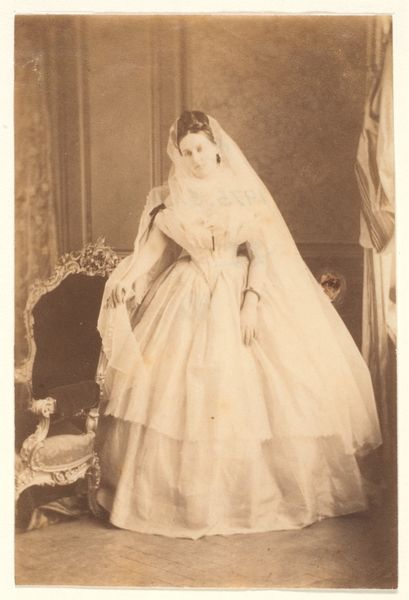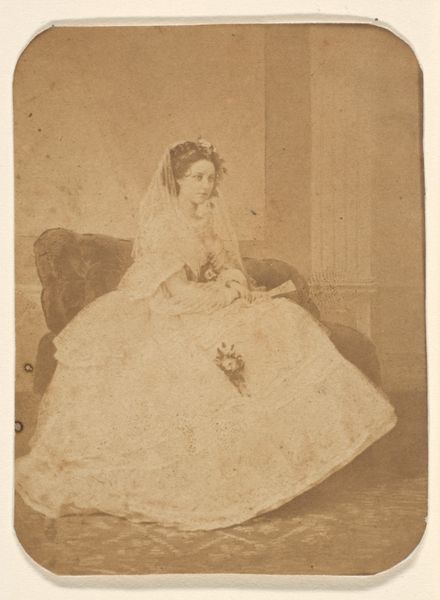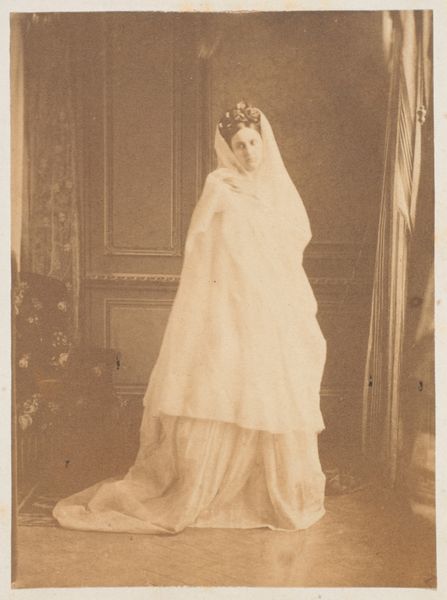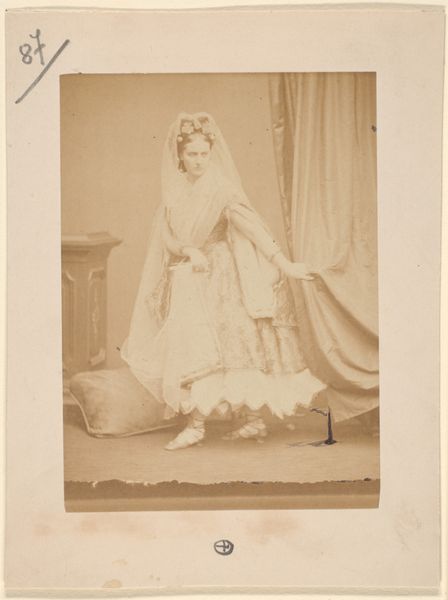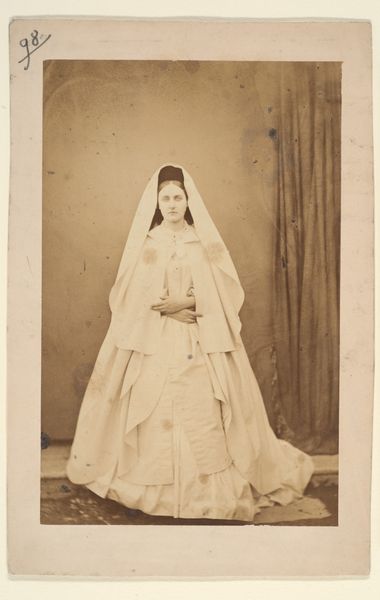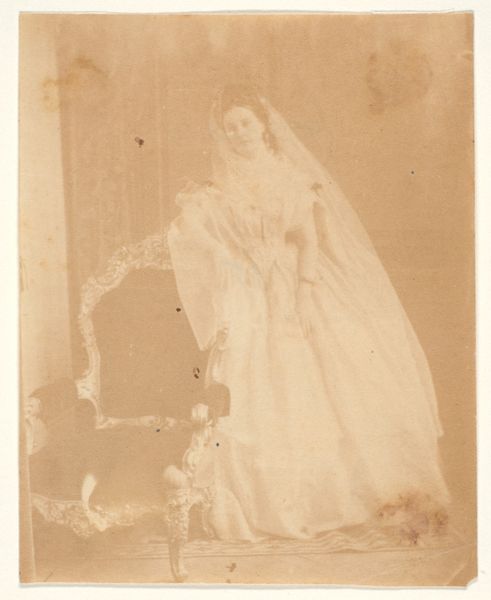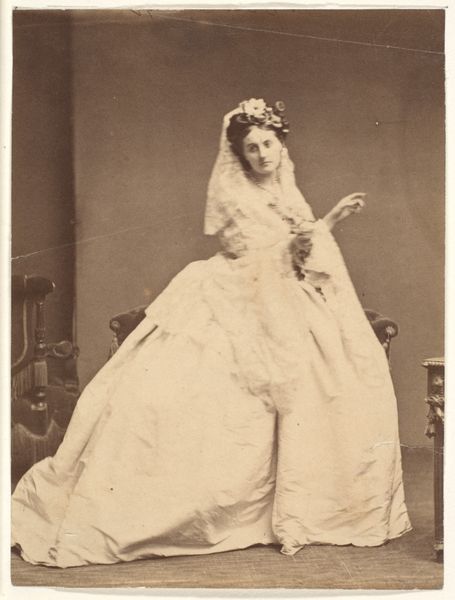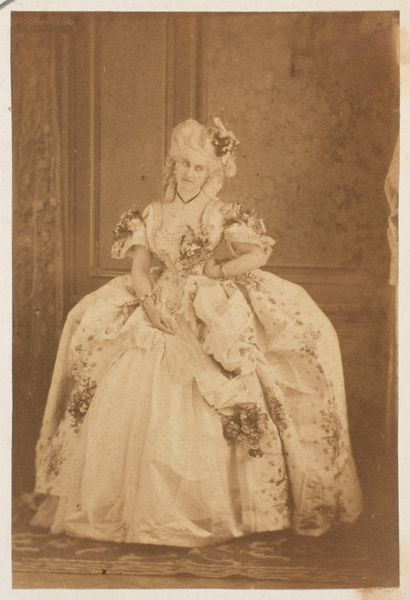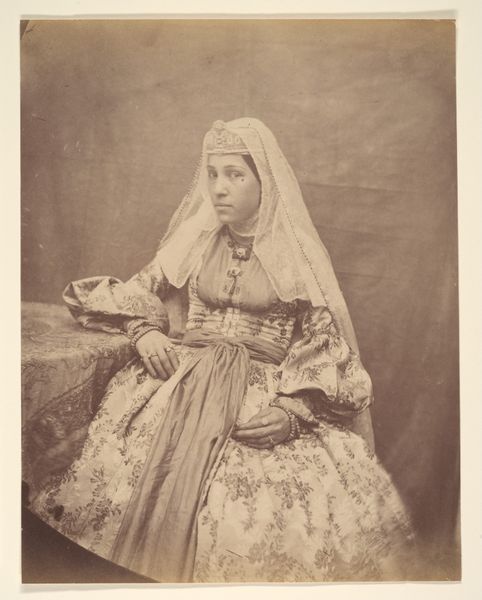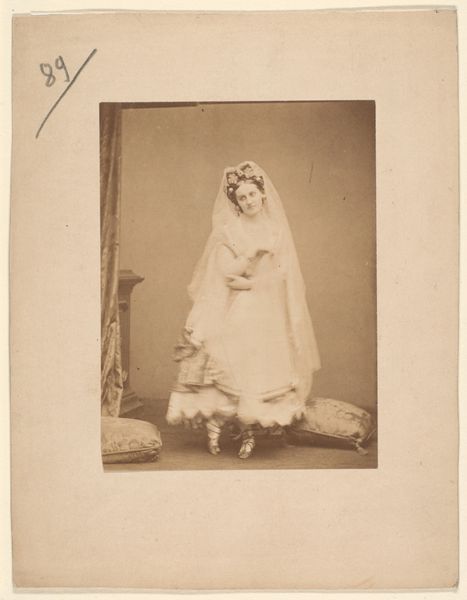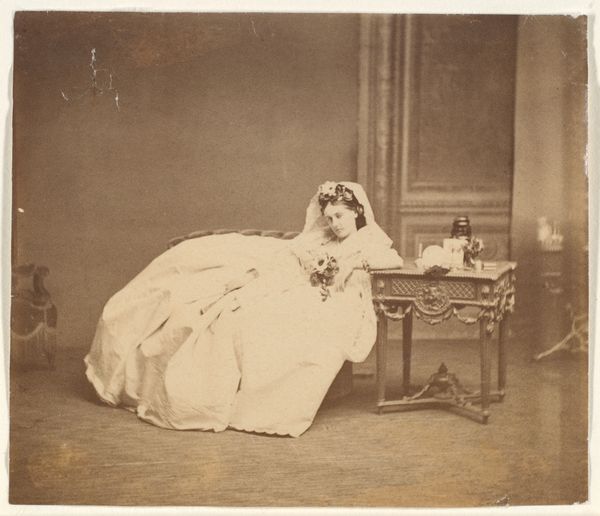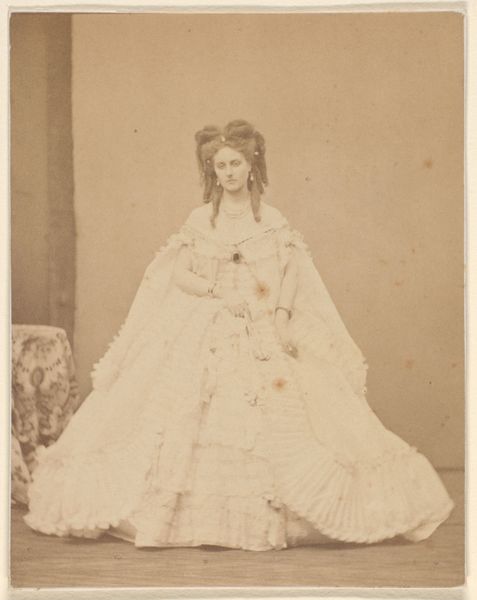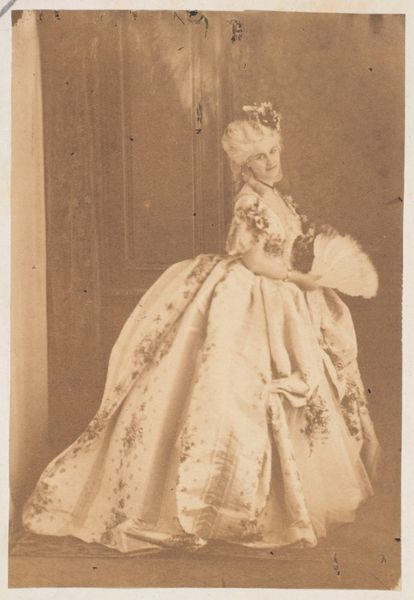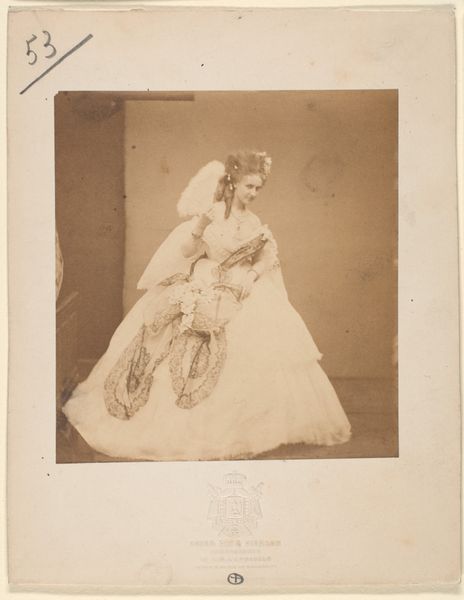
Dimensions: 7.3 x 10.2 cm. (2 7/8 x 4 in.)
Copyright: Public Domain
Curator: It's quite striking, isn't it? The subject of this albumen print, created in the 1860s by Pierre-Louis Pierson, is a study in constructed identity. It’s called "Derelitta". Editor: Immediately, the soft sepia tones give it an ethereal, almost dreamlike quality. The figure is positioned so that our eyes are immediately drawn into the delicate textures of her veil and gown. The whole image radiates fragility. Curator: That feeling is intentional, I think. The title "Derelitta" evokes abandonment, reflecting the prevailing romantic trope of the fallen woman, a figure marginalized and suffering. Note how her gaze avoids direct eye contact, reinforcing this vulnerability. This Romantic notion connects to very real social issues of the period around the status and limited options of women. Editor: Yet, there's an undeniable artifice at play. Look at the meticulous arrangement of her garments, the strategic placement of the chair, and the pose itself. Pierson's arrangement here creates a delicate compositional balance—her figure flows into the back of the ornate chair forming what I see as repeating curvilinear patterns. This creates a certain tension for me. Curator: Precisely! The artifice heightens the commentary. Pierson, and perhaps his subject, are performing this idea of feminine sorrow, revealing the constructed nature of gender roles in the 19th century. We see it played out in artistic representations of women throughout that era. Editor: You're drawing me to the staging now. The draping behind the sitter contrasts to her clothing. Curator: Absolutely. Consider also who this person actually *was*. Pierson was known for photographing the Countess de Castiglione, and many historians suggest she may have been his primary subject. This knowledge prompts us to rethink traditional power dynamics in photography at that time. What does it tell us about the sitter? And the photographer? What power did they hold over each other? Editor: Right, so she may not have been "derelict" in any conventional sense of the word. The photographic apparatus as a kind of performance! I suppose that knowledge further undermines the sentimental air. Curator: Ultimately, this photograph becomes an early exploration into constructed identity. A woman posing as the figure of romantic grief allows a probing analysis into that period and its norms. Editor: Agreed. Seeing the artist's photographic method invites fresh consideration of the role of gendered societal constraints in photographic representation.
Comments
No comments
Be the first to comment and join the conversation on the ultimate creative platform.
